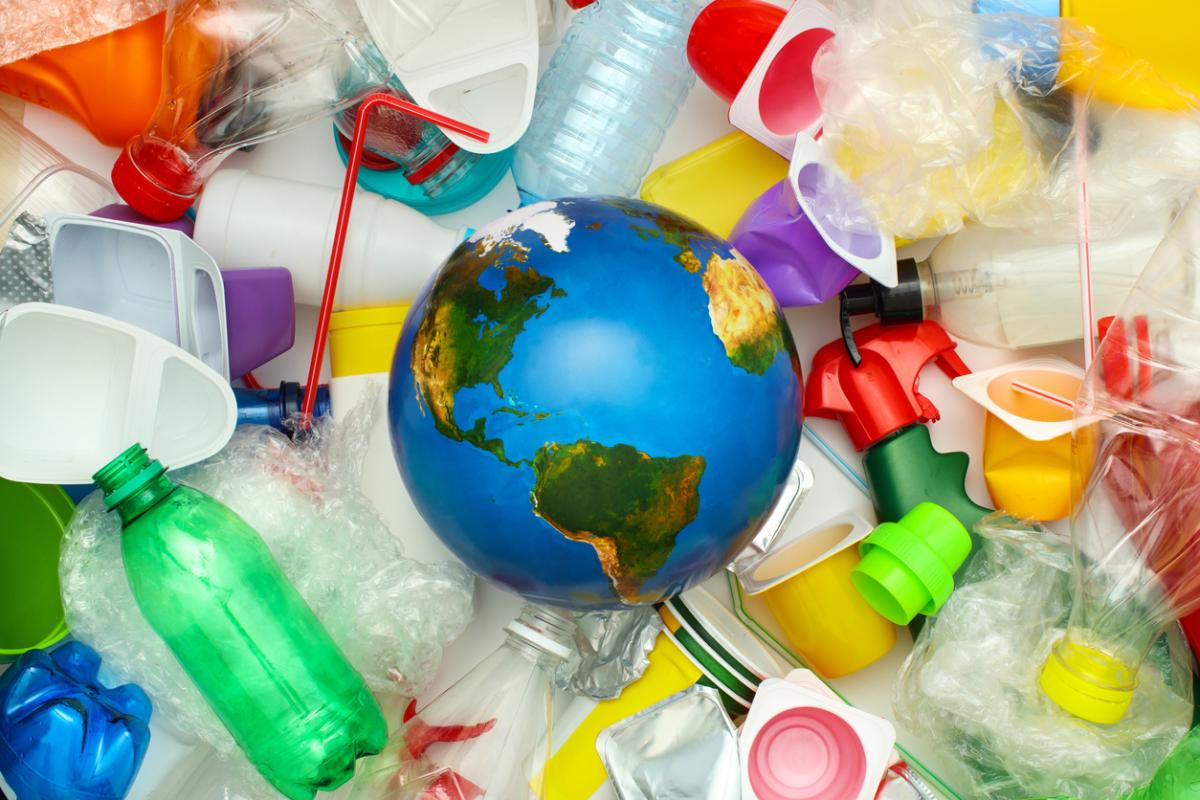Paltry Plastic Recycling Rates, and Why We Can't Ask Consumers To Solve the Problem
By: John A. Lanier

Paltry Plastic Recycling Rates, and Why We Can't Ask Consumers to Solve the Pro…
Plastic. Is. Everywhere. It’s in my phone case. It’s completely surrounding the guacamole in my fridge. It’s woven into some of my clothing. It’s the tape holding shut many of the boxes that arrive on my doorstep. It’s literally under my fingertips as I type this sentence. Plastic is perhaps the most ubiquitous substance on the planet. And for all of the good that plastic does in the world, we clearly have a plastic stuff problem.
The Numbers on Plastic Recycling Rates
First, let’s start with some data. The latest information on plastic recycling rates from the United States Environmental Protection Agency are from 2018, and they…well…they ain’t great! We generated about 35,680,000 tons of plastic that year. Just sit with that number for a second. More than 35 million tons of plastic in just our country alone. How many tons did we manage to recycle? A paltry 3,090,000. That shakes out to an 8.7% plastic recycling rate. Even when you look at the types of plastic that have a higher frequency of being recycled, I still don’t think the numbers are strong. Just 29.1% of PET (what soda bottles are made of) and just 29.3% of HDPE (what your curbside garbage bin, and boatloads of other stuff, is made of) was recycled in the US in 2018.
The present day is almost certainly worse, however. 2018 is also the year in which China decided to stop accepting exported recyclables from the United States. The American recycling market hasn’t been able to pick up the slack, so we can assume recycling rates have fallen, especially since demand for plastics has continued to grow. According to a new study published by the folks at Beyond Plastics, estimates for 2021 plastic recycling rates are less than 6%. And this chart produced by the OECD estimated a mere 4% of plastic in the United States was recycled in 2019. Actually, spend a moment looking at that last chart. Can you tell which country has the worst recycling rate? Heck, regardless of the country, no recycling rates exceed the EU’s estimated rate of 14%. If 14% is the best that we can do, then maybe we need to fundamentally reevaluate the role of plastic in our societies.
Recent Momentum in Favor of Plastic Regulations
It’s against that backdrop that we got some recent good news out of California. Governor Newsom just signed a bill into law that is focused specifically on reducing plastic production and increasing plastic recycling. The New York Times has an excellent writeup on the news, but I’ll pull out a few highlights for you. First, manufacturers are mandated to reduce plastic packaging by 25% by 2032. Second, it sets a goal of 65% plastic recycling rate for the state by the same year. Third, it requires plastic manufacturers to contribute to a $5 billion fund that will be used to mitigate the negative environmental impacts of plastic.
California isn’t the only place taking action on the issue of plastic pollution. A few weeks ago, Canada announced a new ban on some single-use plastics that would go into effect at the end of the year. India just announced a similar ban as well. And more broadly in the United States, the Footprint Foundation tracks various single-use plastic legislation in states and municipalities across the country. It turns out that pulling the regulatory lever is a pretty common tactic for mitigating the problem of plastic pollution.
Consumer Education and Behavior is Not the Answer to Plastic Pollution
For an issue like this, that’s a good thing. The plastic industry would like us to believe that solving plastic pollution is all about consumer education and behavior. To be clear, I’m all for improving those two things. I want more people to understand the difference between plastic #1 (those PET soda bottles) and plastic #4 (LDPE like in grocery bags), and I wish people would proactively clean the plastics they use before tossing them in the recycling bin (soiled plastics are generally unrecyclable). I don’t think we can pin our recycling rate hopes on consumers though, because we have a long track record of that not working.
Moreover, even if it did work, recycling won’t fully stop our plastic pollution problem. Plastics don’t recycle perfectly into new plastic types - the molecules degrade into weaker and weaker forms each time they are successfully recycled. Eventually, even recycled plastics will end up in a form that doesn’t have commercial value. What do we do with them then?
The best answer is to limit their use in the first place. Some day, we might have the technological breakthroughs necessary for fully biodegradable plastics, or we might create new methods for recycling that solve some of the challenges we face today. We don’t have those yet though, so we need more countries and municipalities to pull the regulatory lever and restrict the use of plastics, especially those plastics that are only ever used once.
Ecocentricity is available weekly via email subscription. Click here to subscribe.
Ecocentricity Guest Blog: An Invitation to be Curious, Learn and Adapt
Ecocentricity Blog: Observing Juneteenth: Resources that Can Help Us Stay Engaged in Ending Racism

